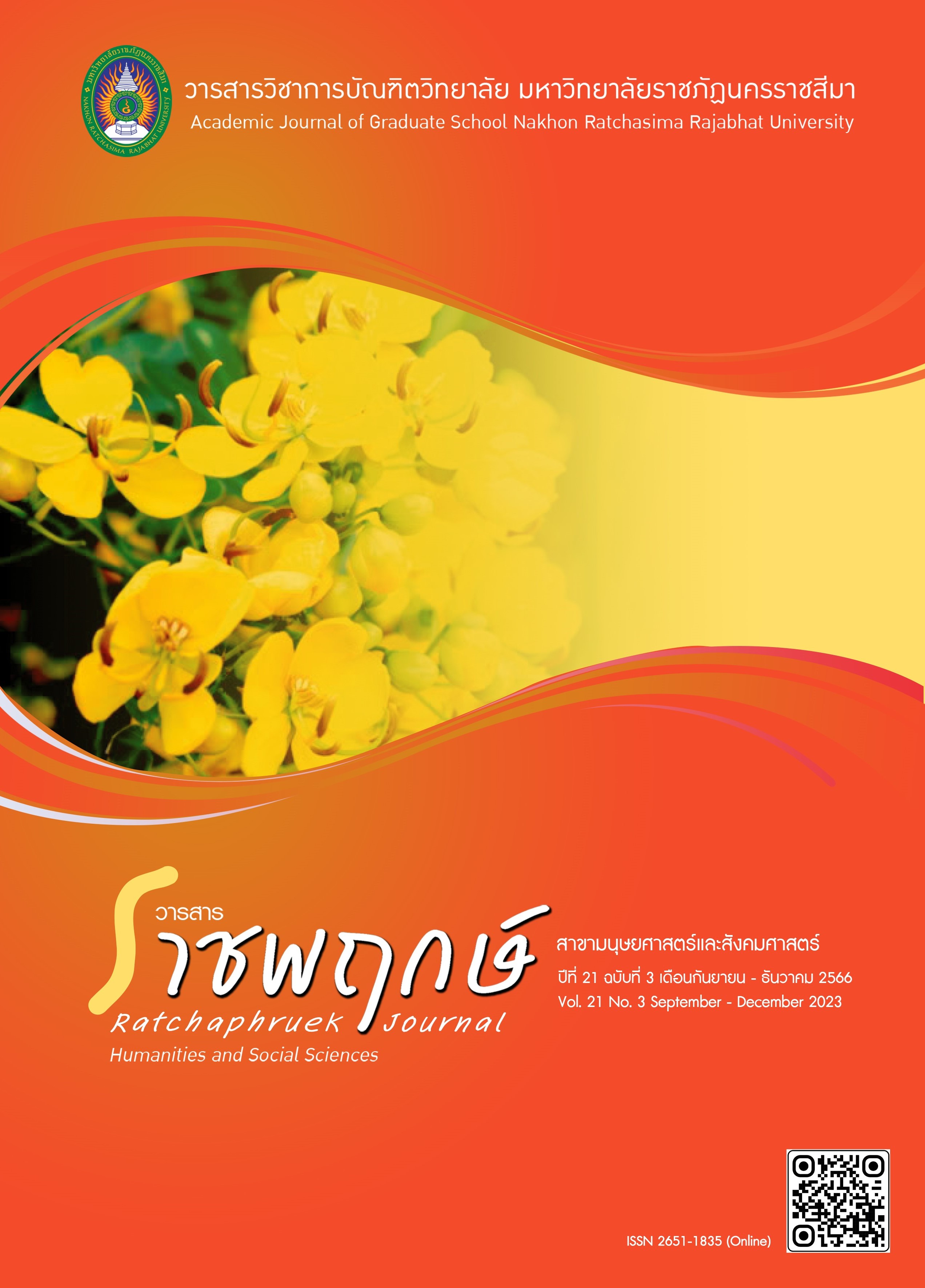Development of Curriculum Developmental Model in Education Sandbox to Enhance Essential Competencies for Basic Education Level Students
Main Article Content
Abstract
In the 21st century, the curriculum for all levels of education will be competency-based, with a focus on developing students’ necessary knowledge, skills, and attitudes for their future lives. The objectives of this research were to: 1) Develop a curriculum developmental model in Education Sandbox; and 2) Examine the outcomes of implementing the curriculum developmental model in Education Sandbox. The research was conducted by using the mixed methods research, consisting of two phases. Phase I involved creating the curriculum development model and included three curriculum development experts as a sample group. Phase II consisted of piloting the curriculum development model with a sample group of 25 fourth-grade students. The research tools were the scoring rubric of curriculum development model in Education Sandbox and scoring rubric of competencies. Data were analyzed by mean, standard deviation, and t-test for dependent. The findings indicated that: 1) the curriculum developmental model created for Education Sandbox which was a systematic model, and 2) teachers were able to effectively develop a curriculum following the procedures outlined in the curriculum developmental model. This curriculum had a positive impact on enhancing the students’ six types of competencies. However, it was recommended that teachers would be provided with training to acquire skills in creating digital materials on their own.
Article Details

This work is licensed under a Creative Commons Attribution-NonCommercial-NoDerivatives 4.0 International License.
References
กระทรวงศึกษาธิการ. (2564). Competency-Based Education Thailand. สืบค้นเมื่อ 2 พฤษภาคม 2566, จาก https://cbethailand.com/
พระครูกิตติญาณวิสิฐ, พระครูวิรุฬห์สุตคุณ, ระวิง เรืองสังข์ และสุทิศ สวัสดี. (2565). แนวทางการพัฒนาพื้นที่นวัตกรรมทางการศึกษา. วารสารศิลปการจัดการ, 6(2), น. 747-763.
มารุต พัฒผล. (2562). รูปแบบการพัฒนาหลักสูตรร่วมสมัย. กรุงเทพฯ: ศูนย์ผู้นำนวัตกรรมหลักสูตรและการเรียนรู้.
ศมกร ศิลาโชติ, สิรินภา กิจเกื้อกูล และวิภารัตน์ เชื้อชวด ชัยสิทธิ์. (2563). การพัฒนาสมรรถนะการแก้ปัญหาแบบร่วมมือของนักเรียนชั้นมัธยมศึกษาปีที่ 5 โดยการจัดการเรียนรู้ตามแนวสะเต็มศึกษาที่เน้นการใช้ปัญหาเป็นฐาน เรื่องไฟฟ้าเคมี. วารสารศึกษาศาสตร์ มหาวิทยาลัยนเรศวร, 22(3), น. 248-260.
สมถวิล วิจิตรวรรณา. (2565). สถิติความสัมพันธ์: เลือกใช้อย่างไร. วารสารมนุษยศาสตร์และสังคมศาสตร์ มหาวิทยาลัยราชพฤกษ์, 8(2), น. 1-15.
สำนักงานจังหวัดนครราชสีมา. (2565). แผนพัฒนาจังหวัดนครราชสีมา ระยะ 5 ปี (พ.ศ. 2566-2570) ฉบับทบทวนประจำปีงบประมาณ พ.ศ. 2567. สืบค้นเมื่อ 2 พฤษภาคม 2566, จาก https://www2.nakhonratchasima.go.th/files/com_ebook_strategy/2022-12_ e443e012614a039.pdf
สำนักงานเลขาธิการสภาผู้แทนราษฎร. (2562). พื้นที่นวัตกรรมการศึกษา. สืบค้นเมื่อ 2 พฤษภาคม 2566, จาก https://www.parliament.go.th/ewtadmin/ewt/parliament_parcy/ewt_ dl_link.php?nid=58606&filename=index
อัจศรา ประเสริฐสิน, กมลทิพย์ ศรีหาเศษ และอารีรัตน์ ลาวน้อย. (2554). แนวทางการวัดและประเมินผลฐานสมรรถนะในศตวรรษที่ 21. วารสารการวัดผลการศึกษา มหาวิทยาลัยมหาสารคาม, 27(2), น. 16-31.
Kabita, D. N. and Ji, L. (2017). The Why, What and How of Competency-Based Curriculum Reforms: The Kenyan Experience. Switzerland: IBE-UNESCO.
Salam, A. (2015). Input, Process and Output: System Approach in Education to Assure the Quality and Excellence in Performance. Bangladesh Journal of Medical Science, 14(1), pp. 1-2.
Saleh, K. (2019). Strategi Peningkatan Mutu Pendidikan Sekolah Dasar Islam Terpadu (SDIT) di Provinsi Kalimantan Timur (Studi kasus SDIT Cordova Samarinda dan SDIT YABIS Bontang). Fenomen: Jurnal Penelitian, 11(2), pp. 143-166.
Roegiers, X. (2016). A Conceptual Framework for Competencies Assessment. Retrieved May 3, 2023, from https://unesdoc.unesco.org/ark:/48223/pf0000 245195
Zhao, Y. and Watterston, J. (2021). The Changes We Need: Education post COVID-19. Journal of Educational Change, 22, pp. 3-12.


